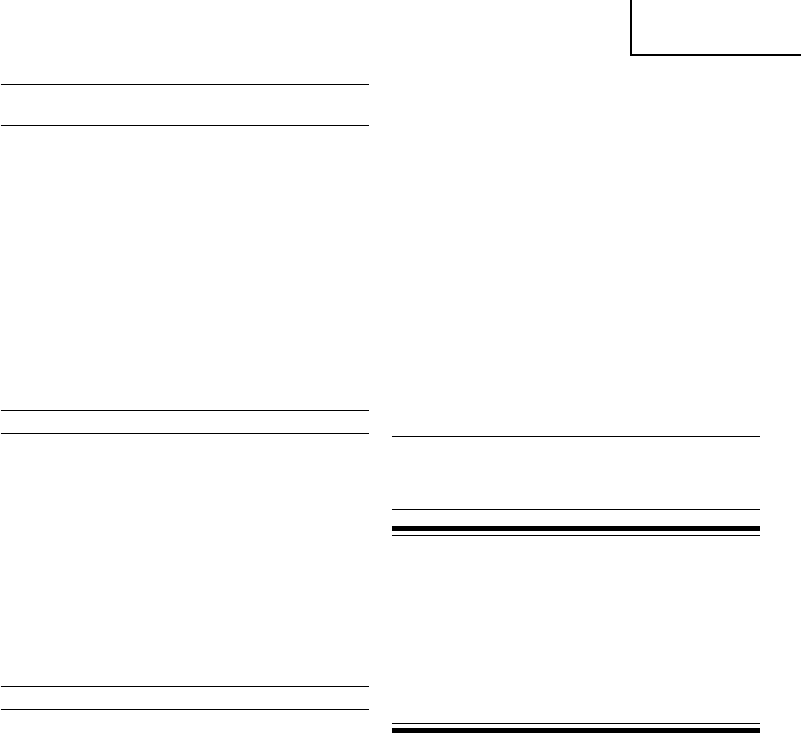
5
English
MOUNTING AND DISMOUNTING THE NOZZLE
AND DUST BAG
1. Mounting the NozzIe
Insert the pin located outside the nozzle into the notch
provided on the blast port, and fully turn the nozzle in
the direction indicated by the arrow in Fig. 1.
To dismount the nozzle.,folIow the above procedures
in reverse.
2. When using the Blower for dust collection
(1) Mounting the Dust Bag
Mount the dust bag on the blast port, following
the same procedure described above for mounting
of the nozzle (Fig. 2).
(2) Mounting the nozzle
Insert the pin located on the outside of the nozzle
into the notch provided on the suction port, and
fully turn the nozzle in the direction indicated by
the arrow in Fig. 3.
HOW TO USE THE BLOWER
1. By pulling the trigger and pushing the stopper, the
switch will remain in the ON position even when the
trigger is released, promoting efficient, continuous
operation. By pulling the trigger again, the stopper is
disengaged and the switch is turned OFF when the
trigger is released.
2. On the RB40VA, the pulling force on the switch
changes the amount of blow force. The maximum
amount of blow force can be adjusted with the speed
control dial (Fig. 4).
3. An excessively large volume of dust in the dust bag
will reduce the dust collecting efficiency of the blower.
Frequently empty the dust bag to ensure maximum
dust collecting efficiency.
MAINTENANCE AND INSPECTION
1. Inspecting the mounting screws
Regularly inspect all mounting screws and ensure
that they are properly tightened. Should any of the
screws be loose, retighten them immediately. Failure
to do so could result in serious hazard.
2. Inspecting the carbon brushes (Fig. 5)
The motor employs carbon brushes which are
consumable parts. Since an excessively worn carbon
brush can result in motor trouble, replace the carbon
brushes with new ones having the same carbon brush
No. shown in the figure when it becomes worn to or
near the “wear limit”. In addition, always keep carbon
brushes clean and ensue that they slide freely within
the brush holders.
3. Replacing carbon brushes
Disassemble the brush caps with a slotted-head
screwdriver. The carbon brushes can then be easily
removed.
4. Maintenance of the motor
The motor unit winding is the very “heart” of the
power tool. Exercise due care to ensure the winding
does not become damaged and/or wet with oil or
water.
5. Service parts list
A: Item No.
B: Code No.
C: No. Used
D: Remarks
CAUTION
Repair, modification and inspection of Hitachi Power
Tools must be carried out by an Hitachi Authorized
Service Center.
This Parts List will be helpful if presented with the
tool to the Hitachi Authorized Service Center when
requesting repair or other maintenance.
In the operation and maintenance of power tools, the
safety regulations and standards prescribed in each
country must be observed.
MODIFICATIONS
Hitachi Power Tools are constantly being improved
and modified to incorporate the latest technological
advancements.
Accordingly, some parts (i.e. code numbers and/or
design) may be changed without prior notice.
NOTE
Due to HITACHI’s continuing program of research and
development, the specifications herein are subject to
change without prior notice.
Information concerning airborne noise and vibration
The measured values were determined according to
EN 60745 and declared in accordance with ISO 4871.
Measured A-weighted sound pressure level: 84 dB(A)
Uncertainty KpA: 3 dB(A)
Wear ear protection.
The typical weighted root mean square acceleration value
does not exceed 2.5 m/s
2
.


















